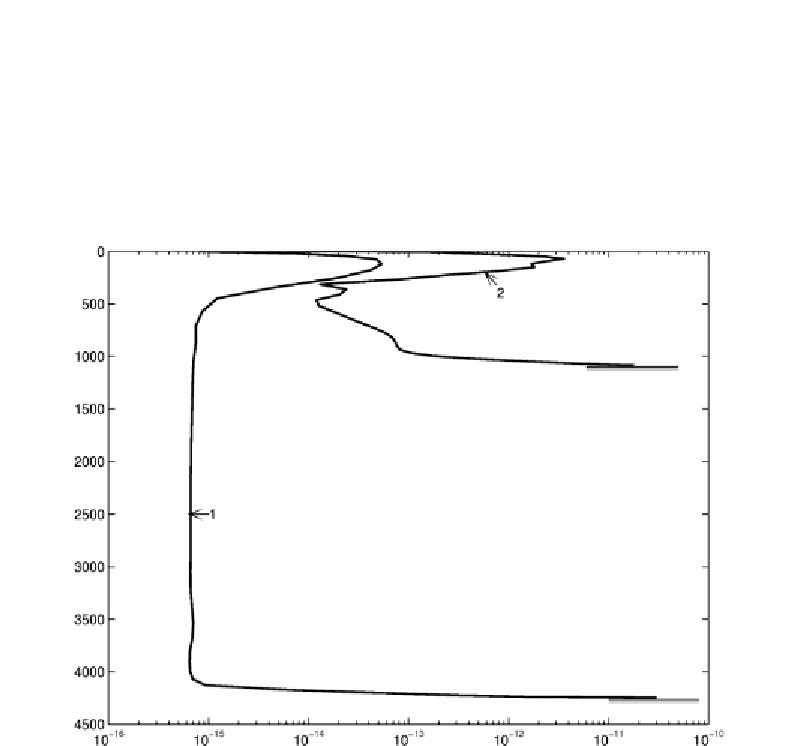Environmental Engineering Reference
In-Depth Information
Arctic Ocean, the baroclinic tidal energy density may be as much as the above value, only
provided that departures of quasi-stationary residual tidal velocity from the barotropic one are
large. Almost everywhere in the Arctic Ocean, the density of baroclinic tidal energy varies
from 0 to 100 J/m
2
. Figure 5 is interesting in one more respect. It turns out that the baroclinic
tidal energy density depends on depth. It tends to rise on the continental shelf and diminish in
the deep ocean. In so doing, its difference in value at troughs and ridges in the deep ocean is
as much as one order of magnitude. This diference does not seem to be insignificant if
characteristic changes in local depth (see Figure 1) are taken into account.
Figure 6. Vertical profiles of the local normalized (by mean seawater density) averaged rate of
baroclinic tidal energy dissipation (W/kg) for the M2 wave at two sites of Amundsen Trough (1) and
Lomonosov Ridge (2).Depths (m) is plotted along the ordinate axis, the values of -έ/ρ
0
(W/kg), along
the abscissa axis. Horizontal lines correspond to local depths.
Further, it becomes pronounced most clearly when comparing vertical profiles of the
local normalized (by ρ
0
, where ρ
0
is the mean seawater density) averaged baroclinic tidal
energy dissipation rate -έ/ρ
0
. In Figure 6, the vertical profiles of -έ/ ρ
0
are plotted at two
locations of Amundsen Trough and Lomonosov Ridge. In both cases, the local baroclinic
tidal energy dissipation rate is greater in the surface and near-bottom layers than at
intermediate horizons. The fact of increasing -έ/ ρ
0
as we approach the bottom is confirmed
by experimental data [Ledwell et al., 2000; St. Laurent et al., 2001; Rudnick et al., 2003;
Klymak et al., 2004; Alford et al., 2006]. The difference between the values of -έ/ ρ
0
in the
surface and near-bottom layers may be as one order of magnitude and more, the value of -έ/
ρ
0
near the bottom at Lomonosov Ridge not exceeding 2 × 10
-11
W/kg. Hence, it is about two-
three orders of magnitude less than at Mid-Atlantic and Hawaiian Ridges [St. Laurent and
Nash, 2004]. Generally, the local baroclinic tidal energy dissipation rate in the Arctic Ocean

Search WWH ::

Custom Search